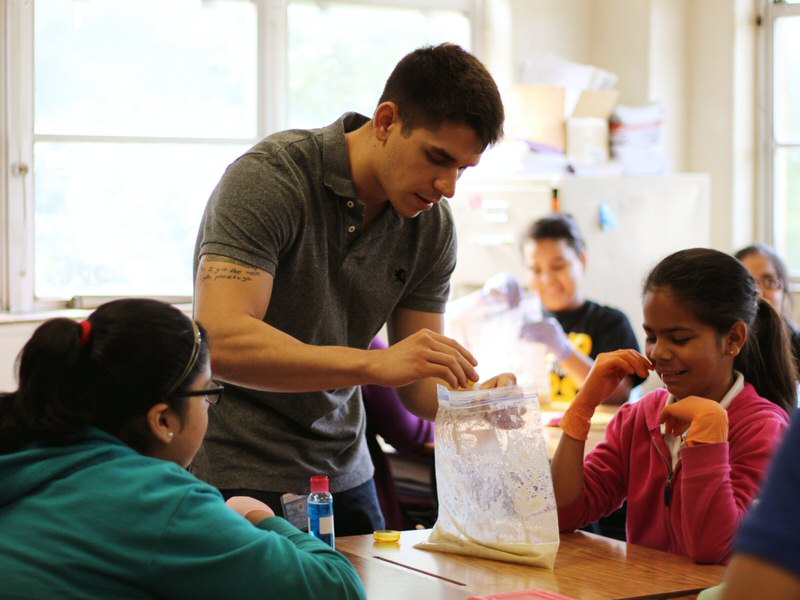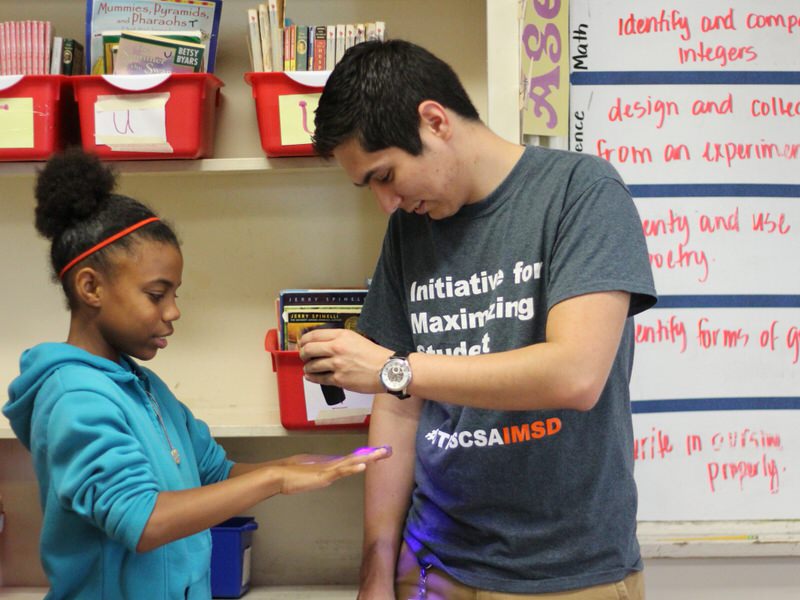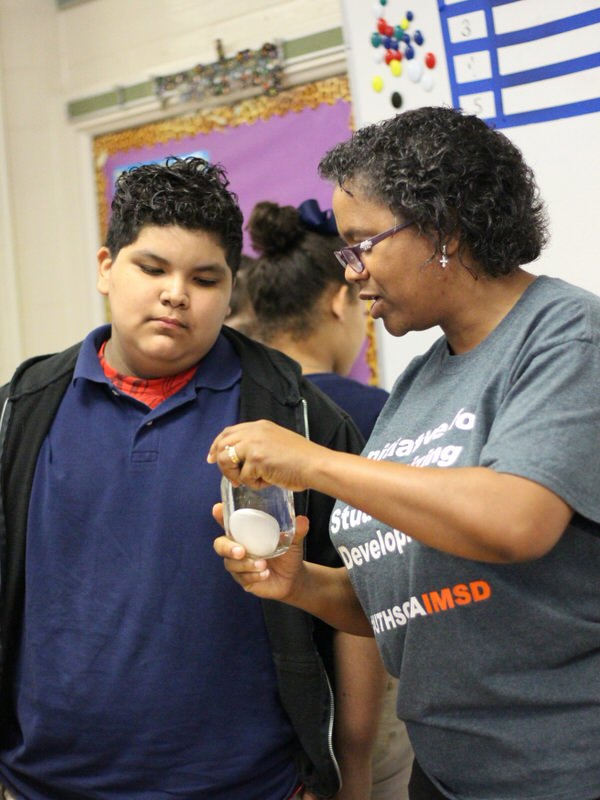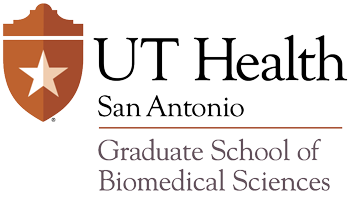Using Household Materials For Science
 A group of graduate students
A group of graduate students
visited three fifth grade science classrooms at Booker T. Washington Elementary School to show them how to extract DNA, simulate a concussion, and see germs
using household materials.
“I enjoyed the smiles and interest science bought to the classroom with these simple experiments. I was surprised by how much these
children appreciated the experiments and how much they knew already,” said
Adrian Beckmann, a first year graduate student in the Integrated Biomedical Sciences program in the lab of Dr. Bess Frost who is working to mitigate the effects of Alzheimer’s disease.
The group is part of the Initiative for Student Maximizing Student Development (IMSD R25 GM095480), a National Institute of Health student development program for institutions with research-intensive environments.
 Elizabeth Ochoa, a graduate student in the Integrated Biomedical Sciences program in the lab of Dr. Gek-Ming Sia explained that she enjoys volunteering at schools because it allows her to share her passion for science.
Elizabeth Ochoa, a graduate student in the Integrated Biomedical Sciences program in the lab of Dr. Gek-Ming Sia explained that she enjoys volunteering at schools because it allows her to share her passion for science.
“It is so important for me to go and teach others about
science because that’s how I got excited about science. I’m grew up in
Washington State… [and] on a yearly basis, scientists would come to my grade
school and teach us about astronomy, biology, chemistry and more,” she said. “Participating
in these activities along with my own passion for learning developed into a
love of science and discovery. If I had not been exposed to science early on,
who knows if I would have the same appreciation for how our bodies work, or how
the earth works. I want these kids to have the same chance.”
At the graduate school, Ochoa studies the molecular and cellular mechanisms of synaptogenesis, and how differences in this process may play a role in neurodevelopmental disorders like autism and schizophrenia.
 During the volunteering event, the graduate students did three experiments: DNA extraction, concussion simulation, and hand washing.
During the volunteering event, the graduate students did three experiments: DNA extraction, concussion simulation, and hand washing.
“It’s important for anyone to learn about these things, but we had a unique opportunity to really impact the way these students think about
their world by exploring these topics. Take the concussion simulation. Here we explain to the students that it’s the cerebrospinal fluid in our brain that acts like a shock absorber to keep our brains safe. We do this by having them shake an egg in a jar without and then with water. My particular class took turns trying to shake the jar as hard as they could to crack the egg in the
water-filled jar. After repeated attempts, the egg started to crack,” she said.
Ochoa explained that today’s activities did not just get students excited about science but also helped students understand important science concepts.
“What they learned was relevant to them on a daily basis. This demonstration helps to solidify how important it is to keep your brain safe, whether riding your bike or playing sports. The same goes for learning about germs or DNA,” she said. “These topics help students to understand that not just people, but plants have DNA, or that germs are everywhere all the time and are part of our world.”
Meghan Guzman, a graduate student in the Integrated Biomedical Sciences program in the lab of Dr. Phillip LoVerde, explained that the event helped her learn how to better communicate science to young children.
“I tried explaining what a parasite was, and how one goes about getting infected, and the current treatment available for the disease. I then had to follow up with what resistance is, and where my project comes into play. It took a few minutes to try and break everything down. In the end, I ended up with a group of 5th graders saying “ewww!”, which is always hilarious,” she said.
